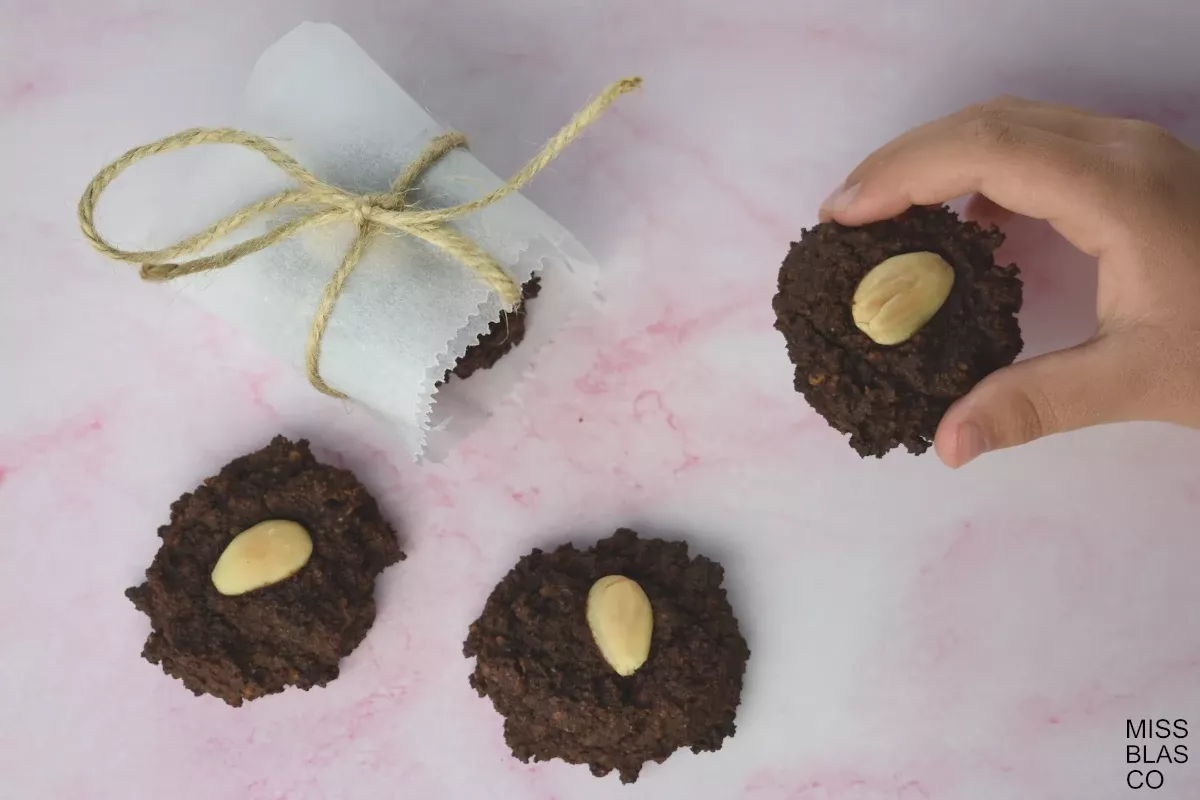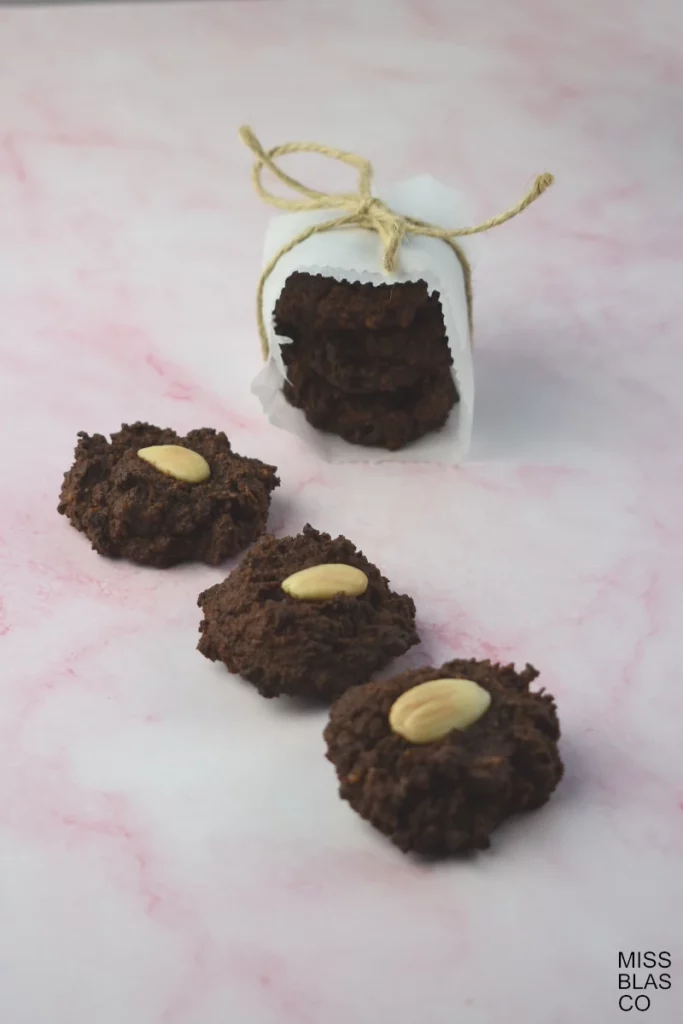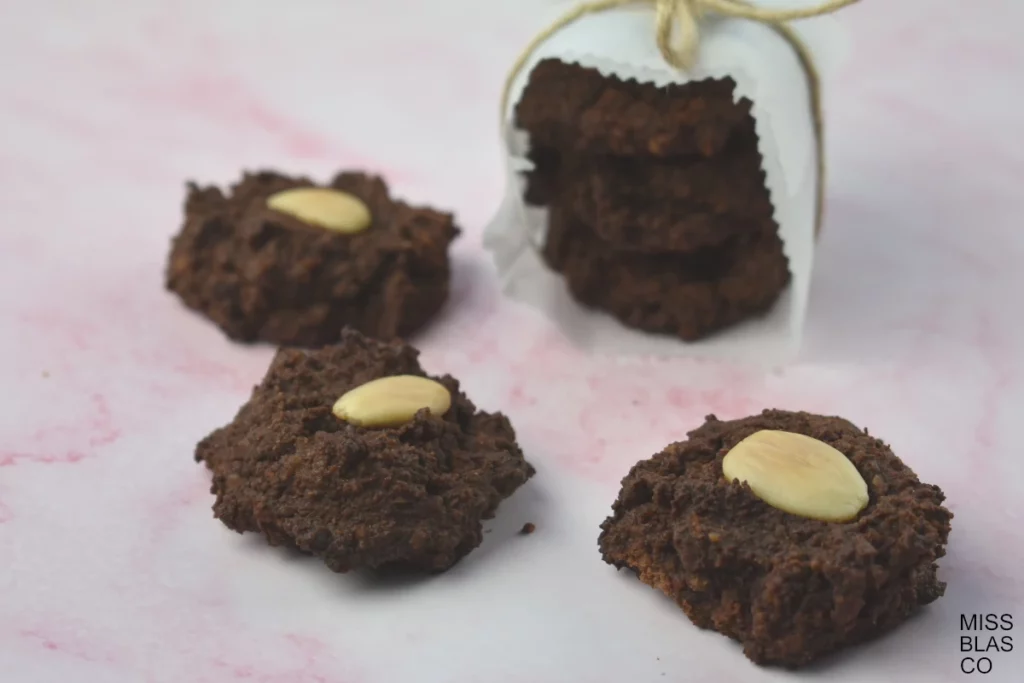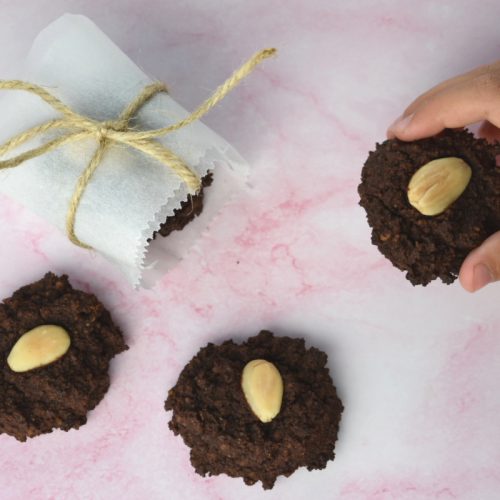
Sugar-free Cocoa Cookies
Sugar-Free Cocoa Cookies: A Healthier Way to Enjoy Homemade Treats
Cookies are processed foods, but not all processed foods are created equal. There is a big difference between industrially produced cookies filled with refined flours, hydrogenated fats, and excessive sugar, and homemade cookies made with natural, nutrient-dense ingredients. In this post, I want to share a recipe for sugar-free cocoa cookies that are quick, easy, and satisfying, while still fitting into a healthy lifestyle.
Because let’s be honest, who doesn’t enjoy having a cookie with their tea or coffee? And what about kids? If they like a glass of milk, cookies often come with it, and if those cookies are chocolate, even better. With this recipe, you can meet those cravings at home without relying on packaged options that do not support your health goals.
Homemade cocoa cookies give you control over the ingredients you use, which means you can enjoy them without worrying about hidden additives, excess sugar, or unhealthy fats.
Why Choose Homemade Sugar-Free Cocoa Cookies?
Making your own cookies at home allows you to enjoy a sweet treat while staying aligned with your nutritional plan. It’s not about giving up on the pleasure of cookies; it’s about making them in a healthier way.
Here are some key reasons:
- You use real ingredients such as almond flour, cocoa, and eggs.
- You can choose a natural sweetener like erythritol or stevia.
- You avoid refined flours and unnecessary additives.
- You can adjust the recipe to your needs, whether you want it gluten-free, low-carb, or higher in fiber.
Preparing cookies like these requires just a bit of planning and a few minutes in the kitchen. It might seem easier to grab a package from the store, but the satisfaction of making your own healthy version is worth the effort.
Sugar-free cocoa cookies made with almond and coconut flour are a healthier alternative to industrial cookies.

Nutritional Benefits of the Ingredients
Each ingredient in this recipe plays a role in creating cookies that are not only tasty but also healthier than conventional options. Let’s take a closer look:
Almond Flour
Almond flour is naturally gluten-free and lower in carbs than wheat flour. It provides protein, fiber, vitamin E, and magnesium. These nutrients support satiety, blood sugar regulation, and heart health.
Coconut Flour or Oat Flour
Coconut flour is high in fiber, which slows digestion and helps balance blood sugar. If you don’t have coconut flour, oat flour is another option. Oats are rich in beta-glucan, a soluble fiber that supports cholesterol management and digestive health.
Cocoa Powder
Unsweetened cocoa powder brings the deep chocolate flavor without added sugar. It is rich in flavonoids, antioxidants that may help reduce inflammation and support cardiovascular health.
Natural Sweeteners: Erythritol and Stevia
Erythritol and stevia are both excellent alternatives to sugar. They provide sweetness without calories and do not raise blood sugar or insulin levels. Using small amounts is enough to balance the natural bitterness of cocoa.
Coconut Sugar (Optional)
Some people prefer coconut sugar because of its caramel-like flavor. With a glycemic index of 35, it has a lower impact on blood sugar compared to white sugar (GI 68). However, it still contains calories and should be used occasionally. It also provides small amounts of inulin fiber and minerals.
Egg
Eggs provide structure to the cookies while adding protein, vitamin D, and B vitamins. They make the cookies more filling and help balance the overall nutrient profile.
Butter or Coconut Oil
Butter adds richness and healthy fats, while coconut oil is a plant-based alternative that contains medium-chain triglycerides (MCTs). These fats provide energy and enhance satiety.
Almonds
A whole almond on top of each cookie adds texture and extra nutrients, including protein, fiber, and heart-healthy fats.
Cocoa and almonds add antioxidants, healthy fats, and fiber to support satiety and heart health.
Recipe: Sugar-Free Cocoa Cookies
Ingredients
- 1 cup almond flour
- 1 tbsp almond flour (reserve for shaping the dough)
- ¼ cup coconut flour (or oat flour if needed)
- 2 tbsp erythritol (or stevia, adjust to taste)
- 1½ tbsp unsweetened cocoa powder
- ½ tbsp baking powder
- 1 pinch sea salt
- 10 natural peeled almonds
- ¼ cup water
- ¼ tsp vanilla extract
- 1 egg
- 30 g butter, melted (or coconut oil)
Instructions
- Beat the egg and mix it with the vanilla extract.
- Melt the butter or coconut oil in the microwave (1 minute at 180W is enough).
- Warm the water and dissolve the erythritol in it, then combine with the egg and vanilla mixture.
- In another bowl, combine all the dry ingredients, reserving 1 tbsp of almond flour for later.
- Mix the wet and dry ingredients together until a dough forms. If it feels sticky, use the reserved almond flour when shaping.
- Preheat the oven to 200°C (390°F) and line a baking tray with parchment paper.
- Using a tablespoon as a measure, scoop dough onto the tray and shape into cookies with your fingers. Press a whole almond on top of each cookie.
- Bake at 180°C (350°F) for 12 minutes. Flip them over and bake for another 4–5 minutes.
- Allow to cool on a wire rack before serving.
Practical Tips
- Store cookies in an airtight container to keep them fresh for several days.
- Portion control is key: 1–2 cookies are enough for a snack.
- These cookies are great for kids too, but be mindful of the sweetener you choose.
Using erythritol or stevia keeps sweetness without raising blood sugar levels.
Moderation is Key
Even when made with healthy ingredients, cookies are still treats. They should not become a daily habit. Think of them as an occasional addition to a balanced diet. If you bake them on a Sunday, plan to eat them throughout the week in controlled portions. Acting with moderation and awareness helps you enjoy these cookies without disrupting your overall nutrition goals.

Sugar-free cocoa cookies are proof that desserts can be both delicious and healthier. By choosing natural ingredients, avoiding refined flours, and controlling the type of sweetener you use, you can prepare cookies that fit into a low-carb, diabetic-friendly, or simply balanced diet.
Homemade cookies are not about restriction but about making smarter choices. This recipe is simple, adaptable, and satisfying—exactly the kind of treat that makes healthy eating enjoyable.
Let me know your thoughts in the comments.
Find more delicious cookie recipes here:

GALLETAS DE CACAO SIN AZÚCAR
Ingredients
- 1 taza almendra molida
- 1 cda almendra molida (para secar la bola de masa al final)
- 1/4 taza harina de coco (si no la tienes puedes usar harina de avena)
- 2 cda eritritol (o estevia al gusto)
- 1 y 1/2 cda cacao en polvo sin azúcar
- 1/2 cda levadura química
- 1 pizca sal marina
- 10 almendras repeladas al natural
- 1/4 taza agua
- 1/4 cdita esencia de vainilla
- 1 huevo
- 30 g mantequilla derretida (puedes usar aceite de coco)
Instructions
- Bate el huevo y añade la esencia de vainilla.
- Derrite la mantequilla o el aceite de coco en el microondas. 1 minuto a 180W será suficiente.
- Calienta el agua y disuelve el eritritol, después mezcla con la vainilla, el huevo y la esencia de vainilla.
- Ahora se trata de mezclar todos los ingredientes secos, excepto 1 cda de almendra molida que debes reservar por si te hace falta a la hora de formar las galletas.
- Mezcla ingredientes secos y húmedos, forma una masa.
- Precalienta el horno a 200ºC y prepara una bandeja de horno, fórrala con un papel de hornear.
- Con una cuchara, yo uso la medida de de 1 cda, es una forma sencilla de hacer las galletas más o menos iguales, ve poniendo masa en la bandeja y forma las galletas con los dedos, usa la almendra molida que tenías reservada para que no se te pegue tanto la masa.
- Pon una almendra sobre cada montoncito de masa.
- Hornea a 180ºC durante 12 minutos, pasado ese tiempo dales la vuelta y hornea 4 o 5 minutos más. Saca las galletas y deja que se enfríen sobre una rejilla. Solo te queda disfrutarlas.